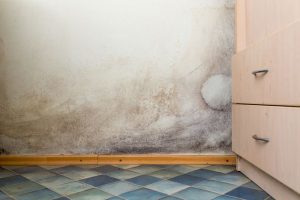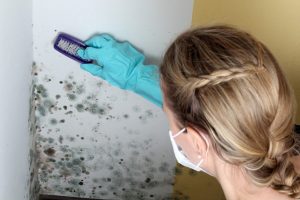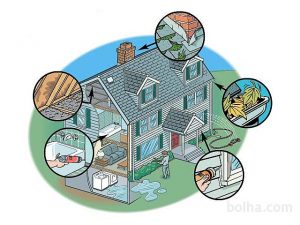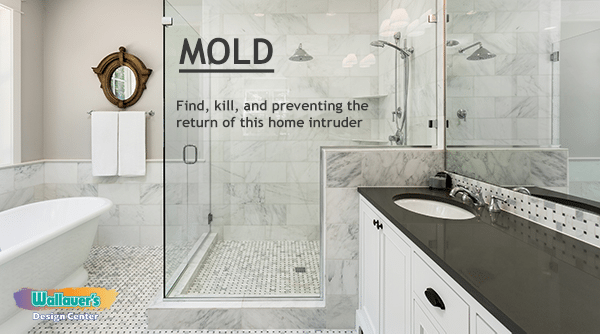At this very moment, there could be an intruder in your house, not a thief or burglar, but one that’s stealing your home’s value and possibly even your health. The intruder? Mold, a living organism that can become a real problem if left untreated.
Some forms of mold eat away at your old bread or the forgotten oranges in your refrigerator, but the types of mold that grow on the surfaces of a home are more of a threat. At the very least, mold is unsightly. For those with allergic sensitivities, asthma, or other respiratory issues, it can cause physical distress or illness.
1. Finding The Mold:

Where should you look for mold in your house? The most obvious places are the kitchen, bathrooms, and other areas where water is present. In fact, you might have already noticed mold in tiled areas of your bathtub or shower. You might have to do a little detective work, however, to find other places in which mold is lurking. Look under bathroom vanities and kitchen sinks, around windows, and in basements where water seepage could be a problem. In some cases, all you have to do is follow your nose; the characteristic musty smell may direct you to the mold’s location. Typically you can identify mold by its splotchy black appearance. When in doubt, buy a mold-testing kit from your local paint store to confirm your suspicions.
2. Killing The Mold:

Eliminating mold can be accomplished in several ways. Some use a homemade mixture of bleach and water. This can be an unpleasant way of tackling the problem, however, and if your homemade mixture doesn’t do a thorough job of removing the mold, surviving spores are likely to grow again and leave you with the same problem. A better alternative is to buy a commercial mold-killing product from your local paint store. Often these products come in a spray format, making them easier and safer to handle and apply. Typically, commercial products are formulated to work on a variety of surfaces—not just tile and grout but also on wood, drywall, and concrete. Using a commercial product will be more effective in removing all traces of the mold and thereby providing you with longer-lasting results. Some commercial products are bleach-based, but if you’re bothered by bleach fumes, seek out a non-bleach alternative. In using any commercial product, make sure you follow application and safety instructions, using gloves and ventilating the room in keeping with the information printed on the label. If you have mold on your drywall and can’t get rid of it with another type of mold-killing product, mold-killing primer is an excellent solution. This product will kill all existing mold, mildew, and other fungal organisms. Once you’ve applied the primer, use a topcoat in the color of your choice.
3. Prevent Mold’s Return:

If you want to prevent mold from coming back in the future, the best option is to fix the conditions that caused it in the first place. This may involve improving ventilation in your bathrooms, fixing loose or leaky faucets, and removing sources of outside water infiltration. The key to mold eradication is finding the mold, killing it, and then doing everything in your power to ensure it doesn’t return.

 Interior Paints
Interior Paints Exterior Paints
Exterior Paints Primers
Primers Stains & Clears
Stains & Clears
 Paint Brushes
Paint Brushes Paint Roller
Paint Roller Paint Trays & Liners
Paint Trays & Liners
